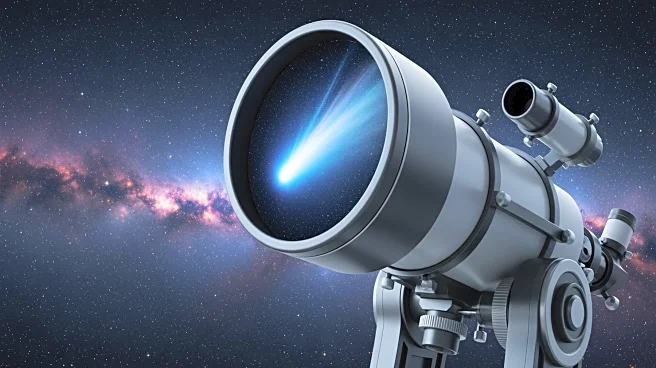What's Happening?
Astronomers have identified a super-Earth exoplanet, GJ 251c, located 18.2 light-years away in the constellation of Gemini. This planet orbits a red dwarf star and is situated in the habitable zone, where
conditions may allow for liquid water. GJ 251c is four times the mass of Earth, making it a prime candidate for future exploration. The discovery was made using data from the Habitable-Zone Planet Finder and the NEID spectrograph, which detected the planet's gravitational influence on its star. The planet's potential to host life remains unconfirmed, but it is considered a promising target for future studies.
Why It's Important?
The discovery of GJ 251c is significant as it adds to the growing list of potentially habitable exoplanets. This finding could have profound implications for the search for extraterrestrial life, as planets in the habitable zone are prime candidates for hosting life. The research highlights the capabilities of current astronomical technology and the need for next-generation telescopes to further explore these distant worlds. The potential for discovering biosignatures on GJ 251c could advance our understanding of life's existence beyond Earth.
What's Next?
Future observations of GJ 251c will focus on detecting an atmosphere and potential biosignatures. The James Webb Space Telescope and upcoming 30-meter-class telescopes may provide more detailed insights. The Habitable Worlds Observatory, planned for the 2040s, could play a crucial role in characterizing the planet. Continued research will aim to determine the planet's ability to support life, considering the challenges posed by its red dwarf star's activity.











